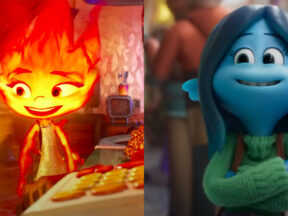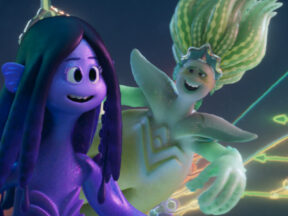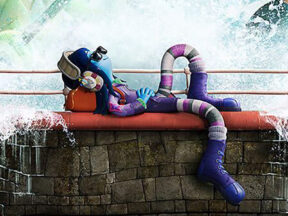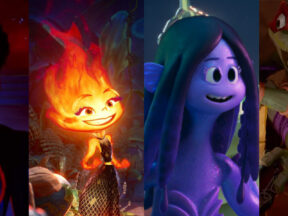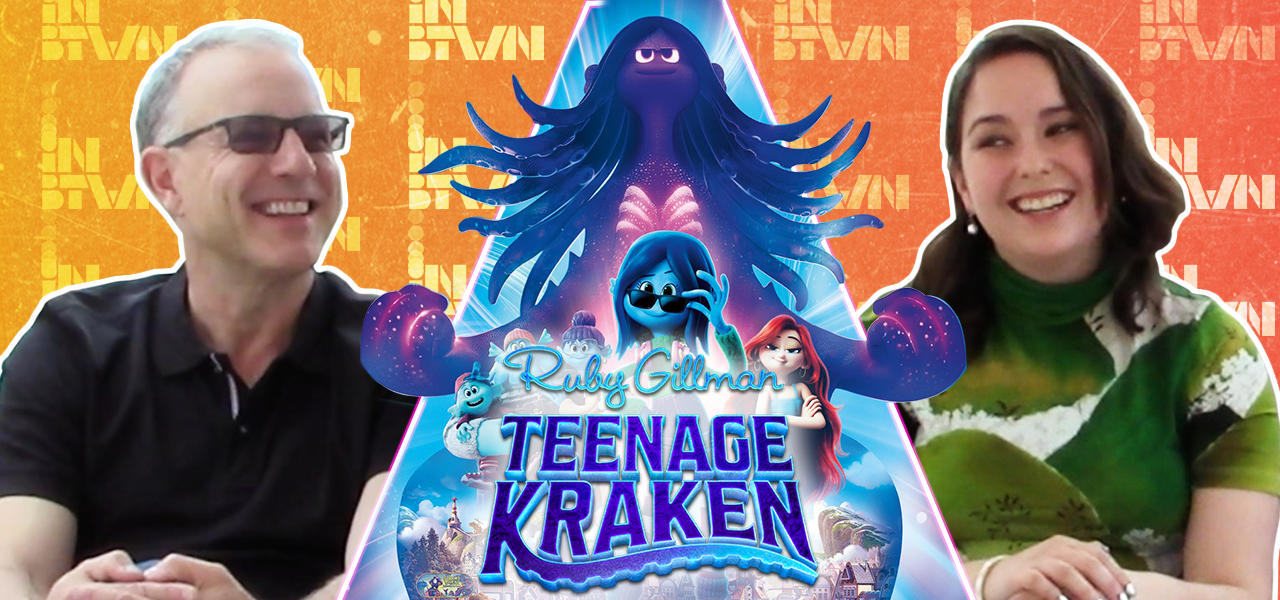
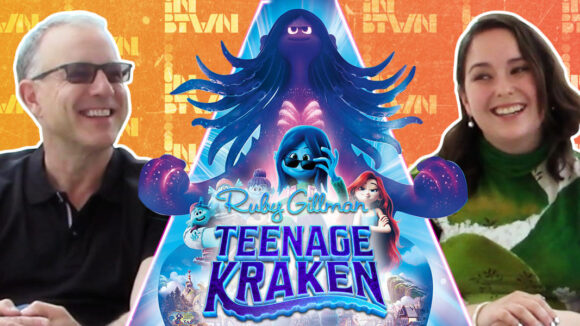
‘Ruby Gillman’ Directors On Creating Dreamworks Animation’s First Titular Female Lead (Video Interview)
Dreamworks’ latest animated feature Ruby Gillman, Teenage Kraken hits U.S. theaters today.
An under-the-radar (and under-the-sea) gem that features the studio’s first titular female lead, Ruby Gillman is a teen girl-kraken who is “stuck between very strong women, amazingly strong women,” says director Kirk DeMicco. Those women include Ruby’s mom and grandmother, as well as her best friend Margot, and her new bestie Chelsea. “A lot of people have a lot of ideas how she should be living her life and this journey she goes on is figuring [out] how she wants to.”
The film debuted at Annecy earlier this month, where Cartoon Brew’s exclusive online event partner INBTWN Animation caught up with director Kirk DeMicco and co-director Faryn Pearl, who spoke with us about how they developed the film.
Thinking back on the early stages of development and working with Dreamworks production design vet Pierre-Olivier “POV” Vincent, DeMicco explained that establishing the scale of the film was an exercise in extremes. That said, for the film to be relatable to audiences it became essential that the artists creating Ruby’s world made the grandest kaiju-inspired set pieces just as relatable as intimate scenes in Ruby’s bedroom. Says DeMicco:
In the production design with Pierre-Olivier Vincent, when we were designing the film, there was this idea of almost bookending with the mundane and the epic. She is such a genuine, warmhearted character that you do want to root for her, but rooting for her in a relatable space which is a girl in her room with her hoodie on just trying to get to school and maybe get past her mom to try to ask a boy to prom is there. Then, having us be on the journey with her when she’s expanding her universe, when she’s exploring the world, and she’s discovering that she’s made for greater things.
According to co-director Faryn Pearl, that contrast not only had to be relatable, but believable:
A lot of what we did was about contrast, we really leaned into the contrast of the two worlds. So, we had her life on land in Oceanside and we kind of needed, for story purposes, for it to be a place where a sea creature could potentially live, where they could survive, but where it still felt kind of small and cramped.
For both directors, there is no question that animation was not just the right medium to achieve those goals, but the only one that could do it. For Ruby’s story to work, they had to stretch incredulity in a way that isn’t possible in live action. DeMicco explained:
I think the superpower of animation is our ability to bend believability. It’s different than live action. That meant setting up a world that felt like we could have this girl walk through it. And because it’s stylized, how pushed it is, everything is caricatured but with thought behind it, it made it plausible.
More than just creating a believable environment, animation allowed the filmmakers to deliver on their story’s comedic and aesthetic goals as well. DeMicco said:
Those principles of squash and stretch are very comedic, but it was organic, and because of the idea coming from cephalopods and the curviness of how they act, a boneless character is part of what it was. It really was her straitjacket in a way. She was meant to be more curvy, more flowing, and her mom had her more rigid, had her walking like she had a spine, which she didn’t have.
For the filmmakers, the film’s animation and special effects are easy to talk about now that the movie is done. But both DeMicco and Pearl practically ran out of breath trying to talk us through all the technical challenges they had to overcome to realize their vision. For Pearl, the results entirely justified the effort expended. She told us about her favorite achievement:
Chelsea’s water hair is a feat of special effects, rigging, fluid dynamics, ocean projection. We were making a movie where we were thinking how can we use this wisely? How can we use this to the best effect? And how can we make this look as good as it gets? That was a technical gauntlet. But I think the work speaks for itself on screen.
According to DeMicco, the technical challenges were matched by the narrative struggles in creating a story big enough for a family of krakens.
Because of the scale, we had to create challenges big enough for a kraken. Usually, they’re the slate-wiping end of a film. They show up and boom, done, everything over. So what do you do to challenge her?

.png)
